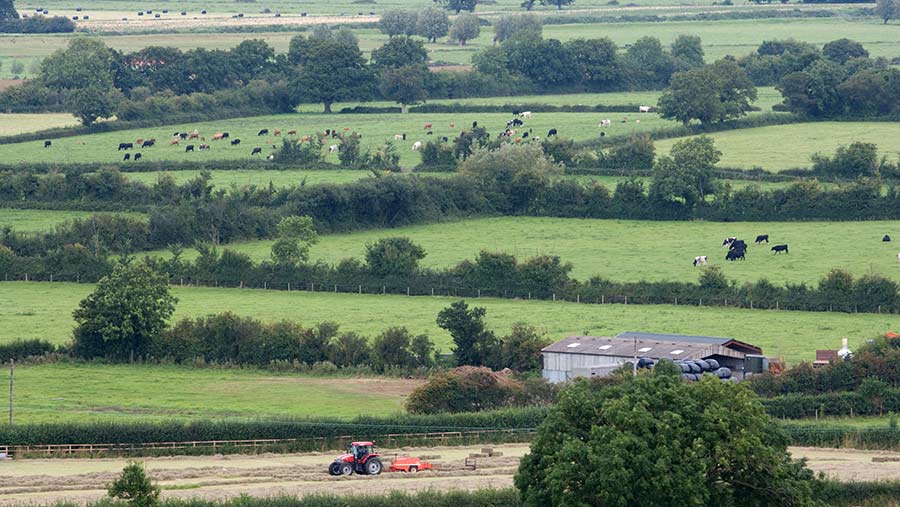Find out average farm rents where you live 2021
 © Tim Scrivener
© Tim Scrivener The average rent for full agricultural tenancy (FAT) agreements rose by 4% in the same year that the average rent for farm business tenancy (FBT) agreements fell by 4%, according to the latest data for England.
Defra’s most recent Farm Rents report covers March 2019 to February 2020, using results from the 2019-20 Farm Business Survey.
Despite this 4% swing, the average rent/acre remains higher for FBTs than FATs – also known as Agricultural Holdings Act (AHA) tenancies.
See also: Find out average farmland prices where you live
As for the previous year, values were recorded to be highest in the east of England, East Midlands and south-west England.
FAT agreements
Agricultural tenancies agreed before 1 September 1995 are known as FATs or AHAs. They usually have lifetime security of tenure and many also carry statutory succession rights.
The total area of land under these agreements fell by 4% between 2018 and 2019 to 3.2m acres.
The average rent increased from £69/acre in 2018 to £72/acre.
The east of England saw the largest decrease (10%) in values to £92/acre, while the North West saw the largest increase (27%), though to just £49/acre.
General cropping’s rent increased by 2% to £91/acre and grazing livestock less favoured areas (LFA) saw the largest change, increasing 17% to £26/acre.
The only farm type to see a decrease in rent was grazing livestock lowland, falling 3% to £73/acre.
For agreements with a recorded rent review, the average rent/acre decreased by 1% from £88/acre to £87/acre.
FBT agreements
FBTs are agricultural tenancies agreed since 1 September 1995 under the Agricultural Tenancies Act.
The total area of land under these agreements rose to 3.13m acres, up by nearly 10,000 acres on the previous year.
The average rent decreased from £93/acre in 2018, to £90/acre in 2019.
East Midlands saw the largest decrease (16%) to £102/acre, while the North East rose the most (33%) to £94/acre.
As with the FATs, grazing livestock LFA farms’ rent increased, this time by 10% to £32/acre, and grazing livestock lowland decreased by 33% to £52/acre.
For those agreements with a recorded rent review in 2019, the average rent/acre decreased by 6% from £106/acre to £100/acre.
Seasonal agreements
The average rent for seasonal agreements (for any term length under 12 months) decreased by 3% from £63/acre in 2018 to £61/acre in 2019.
Uncertain analysis
The report shows that there is not a lot of change in the rental market and, based on this data, it is difficult to say with any certainty whether rents are moving up or down, says Tenant Farmers Association chief executive George Dunn.
This fits with the group’s anecdotal evidence, particularly for FATs.
“We expect the next major rent move will be downwards as more tenants look ahead to future policy changes and take the opportunity of serving rent review notices on their landlords,” says Mr Dunn.
The slow but inevitable trends of land area under FATs decreasing and under FBTs increasing are important, and the moment the FBTs become the predominant agreement will be a major milestone for the industry, he says.
“With the average length of term on new FBTs only 3.21 years and 89% of all new FBTs let for five years or shorter, the let market is becoming increasingly characterised by a worrying degree of short termism.”
It is interesting to note that the gap between average levels of rent for FATs and FBTs appears narrower than is generally believed, he adds.
“This shows that some of the eye-wateringly high levels of tender rents often quoted by landlords’ agents are a clear anomaly when compared with the wider marketplace.
“Landlords and tenants should take a close interest in the figures quoted in this report when setting rent levels for new agreements and at review.”
